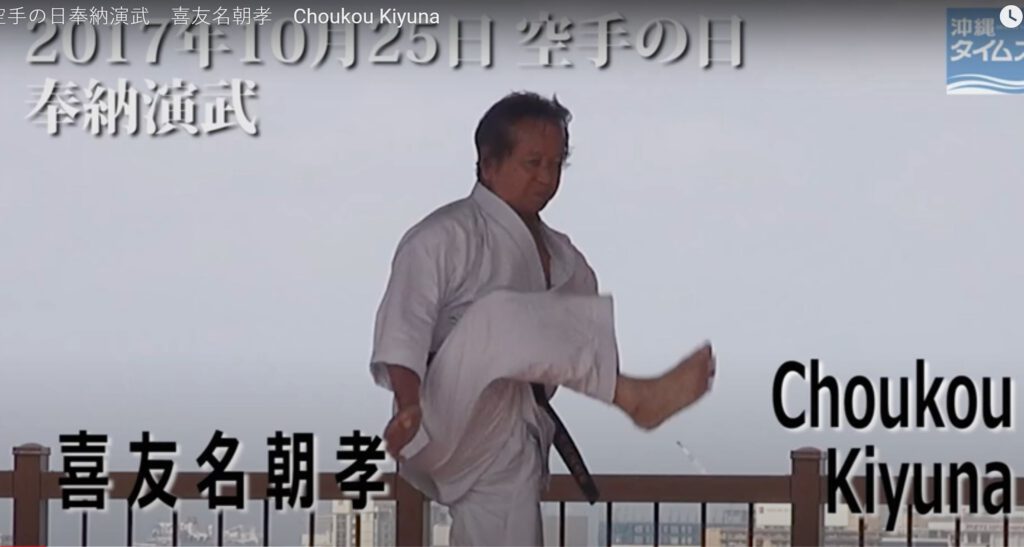(By Kyuna Chōkō 喜友名朝孝, in “Okinawa Karate Kobudo Jiten,” 2008, translation Andreas Quast)
When I was a child, I used to go to the house of Kyan Chōtoku (Chan nu Tanmē, meaning senior-citizen Kyan from the samure class) together with my father when he returned from police duty. At that time, my older brother was about the same age as Chan nu Tanmē’s grandson, and both were taught the basics of karate by Tanmē.
My father studied karate under Chanmī-gwā (Kyan Chōtoku) at the Kadena Police Station together with Nagamine Shōshin, who later became the founder of the Matsubayashi-ryū.
Kyan Chōtoku said that even when he was at the advanced age of 70 years, his karate and bōjutsu skills didn’t make him feel old and it is said that it surprised the karate practitioners at that time. In particular, his kata of Chintō and his bōjutsu were splendid and it was said that even the authorities of the karate world could not imitate it. He was a master who embodied all seven major elements of karate, that is muchimi, atifa, chinkuchi, fēsa, michichī, kukuru, and churasa.
Chanmī-gwā, who was small-built and slender, was as light as a flying bird, and it is said that his keen and nimble technique and unique martial performance have reached the level of kensei (fist saint) and that his technique appeared to be “divinely skilled.”
Eventually, the name of Chan was prefixed to his Chintō and bōjutsu and it came to be called under the nicknames of “Chan nu Chintō” and “Chan nu Shichi Kun.”
Chan nu Chintō (1) 空手の日奉納演武 喜友名朝孝 Choukou Kiyuna – YouTube
Chan nu Shichi Kun holds the six-foot bō in three equal parts, then strikes twice overhead with the tip and the base of the bō, strikes the groin once from the lower-level upward, then strikes three times with the tip and the base of the bō, and then one tsuki-nuki as the finishing blow. It is a tremendous technique of defeating the opponent with a total of seven consecutive attacks (as described above).
The seven consecutive attacks are performed three times, once to the left, once to the right, and once to the front, and long and rigorous training and training are required to perform it satisfactorily. Many different schools and factions perform this kata under the name of “Tokumine no Kon.”
When I was a boy, I was taught “Chan nu Shichi Kun,” which bears the name Chan nu Tanmē, by both the masters Koja Kōtoku and Kinjō Bokuhō from Kaneku Mizugama area [in Kadena].
In other words, Chan nu Shichi Kun is a bōjutsu characteristic for Kyan Chōtoku, the master in years gone by.
It is a symbol of the admiration of the warriors of former Chatan Yara and Kadena, and the villagers, for Chan nu Tanmē, and entrusts them with the feeling of valuing the pride of their hometown.
© 2021, Andreas Quast. All rights reserved.

